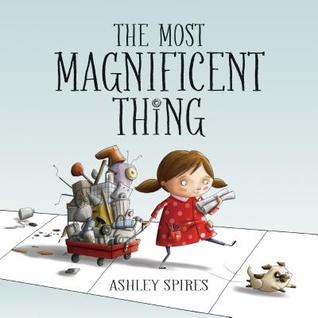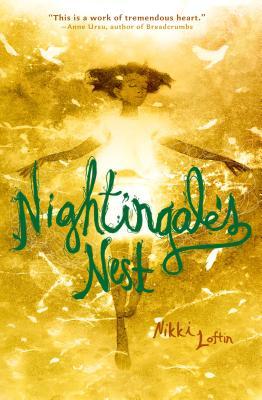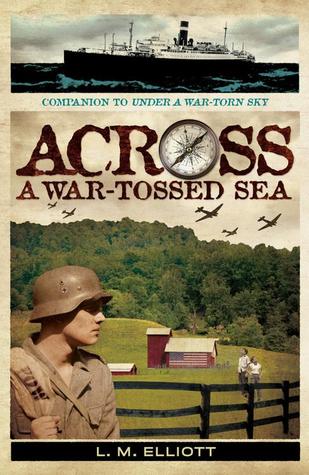COMING SOON TO A LIBRARY NEAR YOU!

Everyone knows that librarians are incredibly cool - Bat Girl and Evie (from "The Mummy" movies) are perfect examples. Author Jen Swann Downey has created an entire organization of librarians who are committed to saving books and writers that are in danger throughout history. For information about the author of this incredible adventure, check out her
website. Or watch the
trailer and get a taste of the famous characters from history that play a part in the story. Personally I would like to meet Hypatia, a famous mathematician who lived in Egypt around A.D. 400. I just love famous women from history, so I know I would enjoy hanging out in Petrarch's Library.
I don't want to throw a lot of spoilers out there when the book is coming in just a few weeks, but here's a brief excerpt from the book:
CHAPTER 1
Books and Swords
Twelve--year--old Dorothea Barnes was thoroughly un--chosen, not particularly deserving, bore no marks of destiny, lacked any sort of criminal genius, and could claim no supernatural relations. Furthermore, she’d never been orphaned, kidnapped, left for dead in the wilderness, or bitten by anything more bloodthirsty than her little sister.
Don’t even begin to entertain consoling thoughts of long flaxen curls or shiny tresses black as ravens’ wings. Dorrie’s plain brown hair could only be considered marvelous in its ability to twist itself into hopeless tangles. She was neither particularly tall or small, thick or thin, pale or dark. She had parents who loved her, friends enough, and never wanted for a meal. So why, you may wonder, tell a story about a girl like this at all?
Because Dorrie counted a sword among her most precious belongings. Yes, it was only a fake one that couldn’t be relied upon to cut all the way through a stick of butter, but Dorrie truly and deeply desired to use it. Not just to fend off another staged pirate attack at Mr. Louis P. Kornberger’s Passaic Academy of Swordplay and Stage Combat (which met Tuesdays behind the library after Mr. Kornberger finished work there) but, when the right circumstances arose, to vanquish some measure of evil from the world.
Dorrie regarded every opportunity to prepare for that moment as a crucial one, and the Passaic Public Library’s annual Pen and Sword Festival—always bursting with costumed scribblers and swashbucklers—afforded, in her strongly-held opinion, one of the best. On its appointed day, she pounded down the wide battered staircase of her home long before the rising sun finished gilding the rusty dryer that sat, for lost reasons, on top of it. She did so in the one tall purple boot she could find, dragging her duffel bag behind her.
At the bottom, in the vast chamber that had once served as a ballroom, Dorrie caught a glimpse of herself in the mirror that hung over a bureau by the back door, and hiked up her wide leather belt. She had buckled it over a hideous, electric-blue-and-black-striped suit jacket with ripped-out sleeves that Dorrie’s father swore he had worn proudly out in public in a bygone era. Underneath it, a shirt with great puffy sleeves and dangling cuffs screamed “pirate” loudly and well. After taking a moment to tug on the hem of the moth-eaten velvet skirt that was meant to hang to her knees but had got caught in the waistband of her underwear, she glowered into the mirror, her sword aloft. Despite the missing boot, the overall effect pleased her.
“Yo ho, Calico Jack,” called her father. “Put this back in Great--Aunt Alice’s sitting room, will you?” Dorrie looked away from the mirror to see her father, holding a tiny carved owl. He wore a ruffled, candy-striped apron that read, “You Breaka My Eggs, I Breaka Your Fast”. With his free hand he was stirring a pot of glopping oatmeal in the part of the old ballroom the Barnes called “The Kitchen”. Other parts of the once grand chamber served as “The Living Room”, “The Office”, “The Rehearsal Hall” for Dorrie’s fourteen-year-old drum-pounding brother, Marcus, and “The Playroom” for Miranda, Dorrie’s four-year-old sister.
Dorrie made her way to her father across one of the dozen rugs bought cheap from thrift stores currently living out their end days beneath the daily burden of ill-conceived art projects, the occasional mislaid plate of scrambled eggs, and books. Heaps and hills and hoards of books. Books left open on the back of the sway-backed sofa and under the piano, on the top of the toaster and hanging from the towel rack.
“Miranda borrowed it,” he said, dropping the carved owl into Dorrie’s outstretched hand. Dorrie gave her father “a look.” Her sister had a deeply ingrained habit of “borrowing” things. Dorrie set off for Great--Aunt Alice’s sitting room, which lay on the other side of the deteriorating mansion.
Great--Aunt Alice had invited Dorrie’s family to live with her two years ago when her sprawling home had become too much to care for by herself.
Besides the ballroom and a few bedrooms, the rest of the mansion was her territory. Just as shabby, she kept it spare and clean and orderly. Great--Aunt Alice claimed the Barnes side of the house gave her fits of dizziness.
After Dorrie set the owl back on its shelf in Great--Aunt Alice’s empty sitting room, the thick hush tempted her to tuck her sword beneath an arm and open a little stone box that stood beside the owl. Inside lay an old pocket watch and a silver bracelet set with a cloudy black stone.
The doorbell rang, and Great--Aunt Alice’s voice in the marble--floored hallway made Dorrie’s hand jerk so that the box’s lid fell closed with a small clack.
Hurriedly, Dorrie pushed the box back onto the shelf. Then, in a silly horror at the thought of Great--Aunt Alice—-who often seemed as remote and unfathomable as a distant planet—-catching her snooping, she wrenched open the lid of a cavernous wicker trunk that stood against the wall and scrambled inside, sword and all. She pulled the heavy lid down on top of her. It bounced on her fingers, trapping them, just as Great--Aunt Alice hobbled into the room. Dorrie sucked in her breath, the pain making her eyes water. She heard the sitting--room door close.
“Well, did he see you go in?” asked Great--Aunt Alice.
“Oh, he doesn’t have the imagination to suspect,” said a young woman breathlessly.
Dorrie pressed her eyes to the gap made by her swiftly swelling fingers. Amanda, Dorrie’s favorite librarian at the Passaic Public Library after Mr. Kornberger, stood now, inexplicably, just inside Great--Aunt Alice’s sitting--room door. Everything about Amanda Ness was long. Her skirts, her hundred braids which hung down below her shoulders, and her nose—-which had been given the usual infant inch and had taken a mile. If a long temper was the opposite of a short one, well, she had that too.
“You should be more careful,” said Great--Aunt Alice, stopping at her writing desk. She smoothed a few white hairs back toward the tight bun at the back of her head. “Has anything changed?”
“Not yet,” said Amanda, sitting down on the edge of a little pale--blue sofa.
“No. Of course not,” said Great--Aunt Alice, easing herself down into a straight--backed chair. “It’s patently absurd that we’re even discussing the possibility.”
Amanda looked vaguely hurt.
“I don’t know what I’ve been thinking,” said Great--Aunt Alice. “Sneaking around in there like a thief these past weeks.”
Amanda clasped her hands together. “You were thinking that the stories might be true!”
Dorrie listened so hard that she could almost feel her ears trying to creep away from her head.
Great--Aunt Alice picked lint from a sweater hung on the back of the chair. “Well, I’m a foolish old woman.” She caught Amanda staring at her. “Oh now, don’t look so disappointed.”
“Give it more time!” pleaded Amanda. “He said he wasn’t sure how long it might take.”
Great--Aunt Alice absently toyed with a little jar of pens on her desk. “I’m ashamed that I believed even for a moment in the possibility.”
In her wonder at the thought that Great--Aunt Alice could believe in anything fantastical for even the briefest of moments, Dorrie barely felt the wicker strands of the trunk embedding themselves in her knees. After all, Great--Aunt Alice had frowned disapprovingly when Miranda asked her to clap her hands so that Tinkerbell wouldn’t die.
Amanda leaned toward Great--Aunt Alice. “But it’s obvious that something special is supposed to happen there.” Dorrie held her breath so as not to miss a single word. The conversation positively bulged with mysterious possibilities.
“It’s obvious my father wanted something special to happen,” Great--Aunt Alice corrected. “My believing that it will happen is as ridiculous as Dorothea believing that she’s going to corner modern evil with a sword.”
At the mention of her name, Dorrie nearly lost her grip on the sword in question and had to scrabble to keep it from falling noisily to the floor of the trunk. There was a moment of silence during which Dorrie felt certain that Amanda and Great--Aunt Alice could hear the small cave-in taking place in the general vicinity of her heart, but her great-aunt only sniffed and began to talk about Mr. Scuggans, the new director of the Passaic Public Library, calling him insufferable.
Dorrie began to breath again in shallow little huffs. Ridiculous! She turned the stinging word over in her mind. Dorrie had never stopped to think about whether her desire to wield a sword against the villains of the world was sensible or ridiculous. It just was. She squeezed the hilt of her sword, drawing strength from it until the crumbling hollow feeling in her chest faded a little.
The conversation outside the basket had turned to the difficulty of cleaning the library’s gutters, and stuck there for what seemed like an excruciating eternity until, at last, Great--Aunt Alice showed Amanda out. Dorrie, her heart pounding, slipped from her wicker prison, and back through the double doors that led into her family’s side of the house.
Check back each week from now until April 15th (publication day) for more exciting glimpses into the word of the Lybrarians.




























